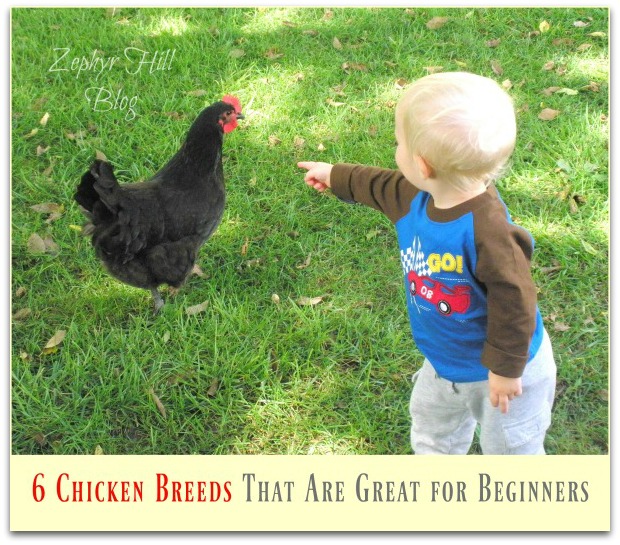
At the end of January you might start seeing signs at the local farm store about “Chick Days” ahead. By February, the stores will be clamoring with the sounds of a thousand peeps. If you’ve got chick fever and want to get started with a flock of chickens, now is a great time, with record inflation and prices on meat and eggs going ever up and up.
But it can be overwhelming, due to all the breed choices, My husband and I have enjoyed raising backyard birds for thireteen years, and are looking forward to placing another hatchery order this spring.
We like having a mix because you get different colored eggs and a smattering of personalities to entertain you. And my round-up of favored breeds is not limited to egg-layers, because nothing beats having a beautiful, proud rooster in your flock (if ordinances permit).
Here are some great breeds for beginners:
#1 Buff Orpington
This gentle, pale gold bird is one of the most popular brown egg layers out there. Buffs are also hardy in cold weather. Your Buff might also decide to set and hatch eggs, which is wonderful to watch, especially if you have children. Because they are in high demand, it’s easy to find Buffs in stock locally and online. Our Buffs are quite docile and readily let us hold them. Flashback below: this is me a whopping thirteen years ago with “Goldie.”
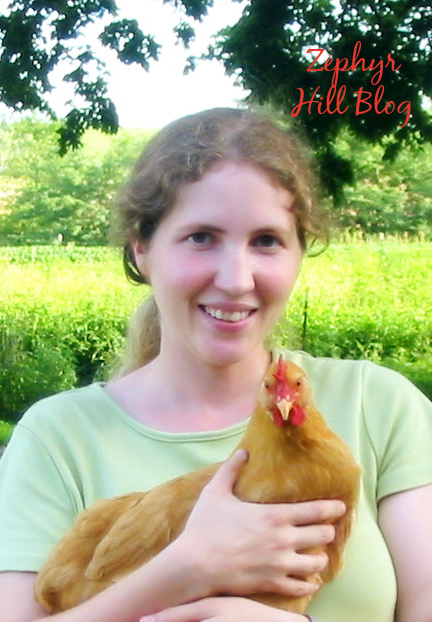
#2 Black Australorp
The striking black feathers of the Australorp looks marvelous in a flock of mixed birds. Blacks are very hardy, just like their Buff cousins, and will give between 250 and 300 beautiful brown eggs per year. That’s our son, Benjamin, pointing at an Australorp in the photo above.
#3 White Leghorn
An American classic! Just think of what fun it will be to have Foghorn Leghorn (think Saturday morning cartoons) running around your chicken yard. Leghorns reliable 300 or more pure white eggs each year. If there’s someone in your family who’s suspicious about backyard eggs because they are usually brown in color, a Leghorn will fix that problem.
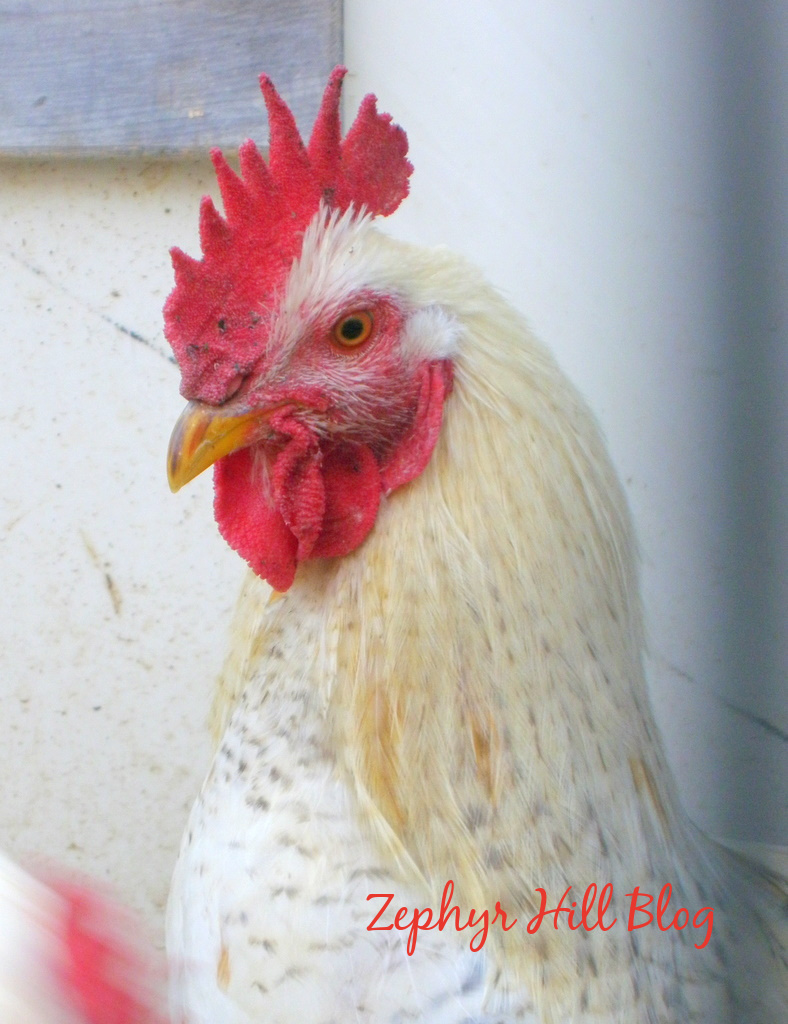
#4 Easter Eggers or Rainbow Layers
Descended from the APA recognized Ameraucana breed, Easter Eggers are independent and irresistibly cute (with feather tufts on their cheeks, no less). This is my favorite backyard breed, producing a modest 150-200 eggs each year BUT in lovely pastel colors like dusty blue, aqua, green, pink and cream. Because these birds don’t breed true (i.e. they are bred from a mix) what you get in terms of feathering is a toss-up, so that makes it more fun. The most common variations I’ve seen over the years are gray, yellow and brown mottled plumage. They have a balanced temperament and can make excellent pets if handled early on.
Note: Be sure that you are not paying an Ameraucana price for an Easter Egger. If you’re at the local feed store and see a cage full of randomly colored “Ameraucana” chicks for three or four bucks apiece, they are likely Easter Eggers and not purebred Ameraucana which can run from $5 to $10 apiece, depending on color.
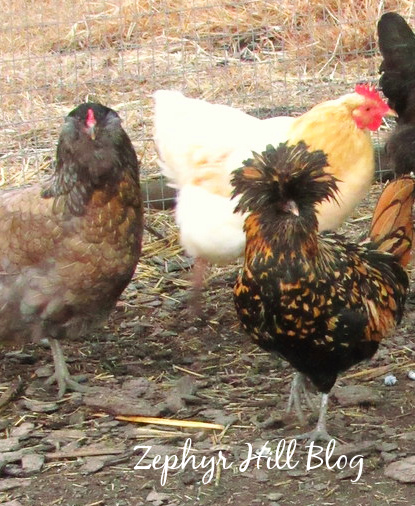
Left to right: Ameraucana, Buff Orpington, Polish Crested
#5 Barred Rock
This bird definitely conjures up an old-fashioned, nostalgic feel. Chances are good that your grandparents, or great-grandparents, owned a few of these handsome black-and-white barred hens. And why not? They’re docile and good-natured, reliably laying around 275 light brown eggs on average each year. Even the roosters are nice fellows. You can’t go wrong with this hardy heritage breed.

#6 Wyandotte –
Developed in Australia as a dual purpose (meat/egg) bird, Wyandottes are strikingly gorgeous, with either gold or silver “laced” feathers with glossy black piping. Not surprisingly, they are also popular for exhibition, but make ideal backyard birds with a hardy physiology and an average brown egg production of 200 per year.
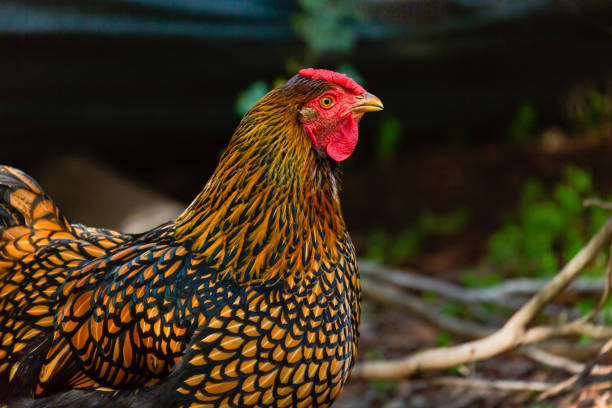
Any breeds that Greenhorns might want to avoid? I would advise that you steer clear of breeds that have the tendency to be aggressive. Rhode Island reds, especially the roosters, are pretty feisty. And rare breeds like Cuckoo Maran and Silkies and Phoenix can be delicate and harder to keep alive.
And Finally…2 Beginner Tips
- If you are planning on keeping a flock in a town or city, check local ordinances first to see if there any restrictions.
- You can get more out of the initial investment you’ll make by: (a) letting your hens hatch out chicks next year, (b) learn how to slaughter birds for meat as they age and don’t produce much anymore, and (c) sell extra eggs to neighbors

I love the colours of the Wynadotte. That is what I would start out with if we could have chickens here in our city. My daughter LOVES chickens and would love one as a pet. Thanks for sharing some breeds.
My neighbor has chickens and a rooster. The rooster can be noisy at times.
We have been talking about getting chickens. I know nothing about them, so this is so helpful.
I agree with these as well. We have many chickens, and most are these breeds too. They are such great chickens.
I didn’t know some breeds were easier to raise than others. This is so helpful to those who are planning to have chickens.
My dad raised chickens in Puerto Rico when I was younger, but I never paid much attention to them. Every time I go and visit I remember that phase in our lives. This is such a great post.
Wow, I didn’t know there were so many choices in breed! Thanks for this informative post for beginners